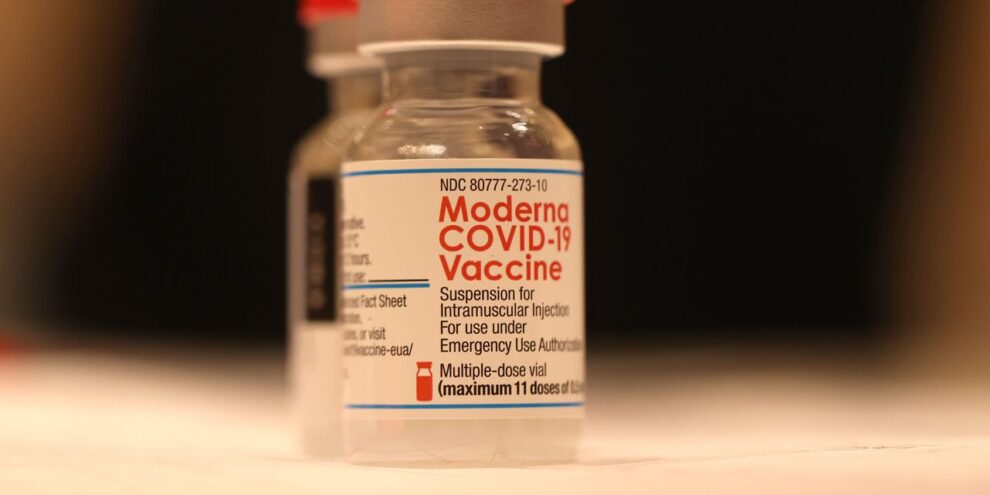
Moderna’s MRNA, +2.19% experimental next-generation COVID-19 vaccine provides more protection against omicron than the original shot, and the company is aiming to make it available to Americans this summer.
What’s different about this shot — called a “bivalent” vaccine — than the currently available boosters is that one half of the formation targets omicron, whose subvariants like BA.2 and BA.2.12.1 are currently the most dominant strains of the virus circulating in the U.S.
The other half is still based on the ancestral strain of SARS-CoV-2, which was first detected in China in 2019. All approved and authorized COVID-19 vaccines are based are on this strain.
“We’re pretty confident that this vaccine is going to provide a benefit even against the family of omicron variants and subvariants,” Moderna President Stephen Hoge said during a call with investors on Wednesday.
Moderna is the first company to share clinical data about a next-generation COVID-19 vaccine. Its stock was up 3.8% in trading on Wednesday.
The company said in a news release that the 437 people who participated in the Phase 2/3 clinical trial and were boosted with the bivalent vaccine had almost twice the amount of antibodies that protect against omicron compared with the 337 people who got the currently authorized Moderna booster.
“This is a clearly superior booster,” Hoge said.
The data was gathered one month after participants got the shot. Moderna now plans to evaluate the participants’ antibody levels over the next six months.
“We’ll see whether that superiority is better or the same at three months, day 90, and at six months, day 181,” he added. “The real goal is to get to that six to nine months duration of protection, which gets you through the whole respiratory virus season.”
The company plans to submit the data to the Food and Drug Administration, with plans to move forward with a fall booster campaign in the U.S. if it’s authorized. It also plans to study a bivalent vaccine in children.
Executives noted that it’s up to U.S. regulators to decide whether young children who have not yet had the option to be immunized should get a vaccine based on the original strain of the virus or skip to one focused on omicron.
“That is actually precedented,” Hoge said. “If you think about it, that’s what happens with the flu vaccine every year.”
Each year, a group of advisers in February or March picks what influenza strains they think will be dominant that fall, and drug makers design the vaccines using the selected strains.
The data so far “would support more of a flu-like model where you just select a strain and then rapidly update the manufacturing and do some parallel testing,” Hoge said.
Public-health experts have been saying for months that developing a new crop of COVID-19 vaccines that target the currently circulating strains of the virus is an important step in keeping people protected.
“The problem is the vaccines were developed against the original Wuhan strain,” Dr. Carlos del Rio, an infectious-disease physician and executive associate dean of the Emory School of Medicine, told MarketWatch earlier this year. “As variants have evolved, we’ve seen a decrease in the efficacy of vaccines. The vaccines stay the same, but the variants are changing.”
There are several ways to redesign the vaccines. A new shot could be omicron-specific — Moderna and Pfizer PFE, -0.91% have both said they are studying this type of vaccine — or a bivalent shot, like the one Moderna’s developing. The U.S. Army is also working on a pan-SARS-CoV-2 vaccine, which essentially targets all variants of this virus and is in early-stage clinical studies.
Moderna’s stock has declined 40.4% so far this year, while the broader S&P 500 SPX, -1.08% is down 12.7%.











Add Comment